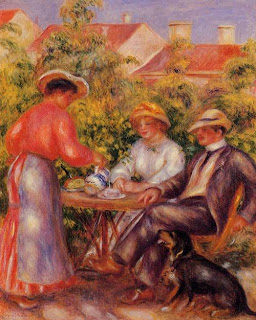Leaves
How silently they tumble down
And come to rest upon the ground
To lay a carpet, rich and rare,
Beneath the trees without a care,
Content to sleep, their work well done,
Colors gleaming in the sun.
And come to rest upon the ground
To lay a carpet, rich and rare,
Beneath the trees without a care,
Content to sleep, their work well done,
Colors gleaming in the sun.
At other times, they wildly fly
Until they nearly reach the sky.
Twisting, turning through the air
Till all the trees stand stark and bare.
Exhausted, drop to earth below
To wait, like children, for the snow.
Until they nearly reach the sky.
Twisting, turning through the air
Till all the trees stand stark and bare.
Exhausted, drop to earth below
To wait, like children, for the snow.
Elsie N. Brady
Every Autumn many people in the USA travel to New England (Massachusetts, Rhode Island, Connecticut, Vermont, New Hampshire and Maine) simply to look at leaves as its forests are made up of a diversity of tree species that turn into a beautiful and spectacular palette of colours.
The fall foliage spreads southward from Canada often reaching its peak in southern New England by mid-October. When the season begins days are still pleasantly warm but nights are cool.
Why do leaves change colour?
All trees, whether deciduous or evergreen have one thing in common: they use a chemical called chlorophyll to transform sunlight, water, and carbon dioxide into glucose, through a process called photosynthesis. This glucose, a type of sugar, provides trees with the energy they need to survive.
Trees are green because chlorophyll is green and there is so much of it in a tree´s leaves that the green hides the other pigments that are also present.
In Autumn the other chemicals in the leaves (phytochrome) give a sign to the tree that cold is on its way, so the nutrients move from the leaves to other parts of the tree for winter storage, and chlorophyll production is reduced. The colours of the other pigments, the yellow, orange, red and purple become more prominent.
Yellows and oranges come from carotene, chemicals that protect chlorophyll from the bleaching properties of the sun.
Reds and purples come from anthocyanin, a chemical used by plants to attract pollinators to flowers.
Browns are the result of a waste product called tannin.
It is very difficult to predict the exact time of peak colours as rain and wind may knock leaves from the trees. When this happens fall´s colour display moves from the forest canopy to the forest floor and the roads become carpeted in gold and red.
This is the time to decorate your home with the colours of Autumn.
The fall foliage has been the theme of many paintings, but perhaps no one has ever been able to show the beauties of the nature like the group of seven, a Canadian group of landscape painters, influenced by the impressionism movement.


















